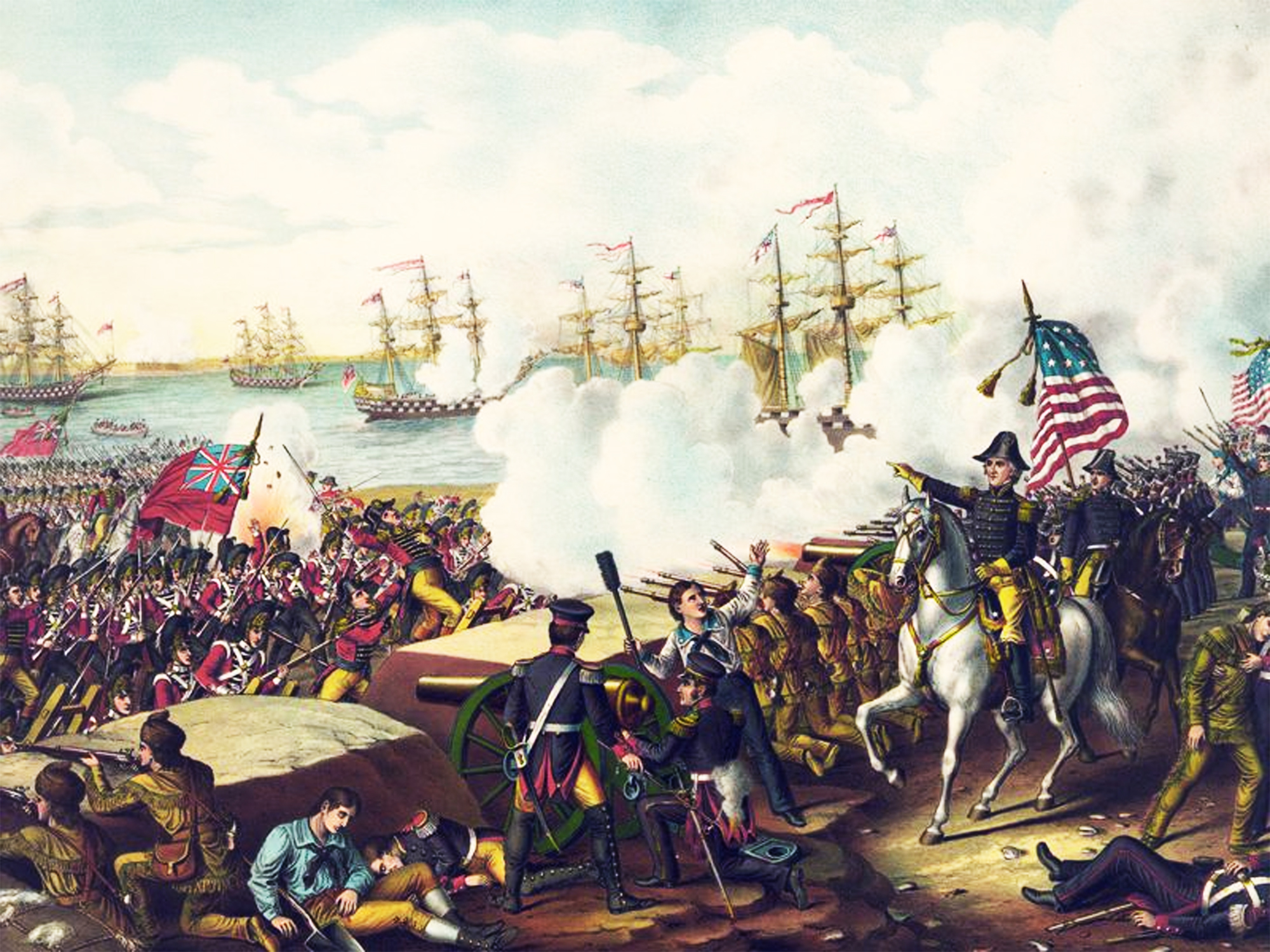
The Battle of New Orleans on January 08, 1815
The Battle of New Orleans: Two weeks after the War of 1812 officially ended with the signing of the Treaty of Ghent, U.S. General Andrew Jackson achieves the greatest American victory of the war at the Battle of New Orleans.
In September 1814, an impressive American naval victory on Lake Champlain forced invading British forces back into Canada and led to the conclusion of peace negotiations in Ghent, Belgium. Although the peace agreement was signed on December 24, word did not reach the British forces assailing the Gulf coast in time to halt a major attack.
On January 8, 1815, the British marched against New Orleans, hoping that by capturing the city they could separate Louisiana from the rest of the United States. Pirate Jean Lafitte, however, had warned the Americans of the attack, and the arriving British found militiamen under General Andrew Jackson strongly entrenched at the Rodriquez Canal.
In two separate assaults, the 7,500 British soldiers under Sir Edward Pakenham were unable to penetrate the U.S. defenses, and Jackson’s 4,500 troops, many of them expert marksmen from Kentucky and Tennessee, decimated the British lines. In half an hour, the British had retreated, General Pakenham was dead, and nearly 2,000 of his men were killed, wounded, or missing. U.S. forces suffered only eight killed and 13 wounded.
Although the battle had no bearing on the outcome of the war, Jackson’s overwhelming victory elevated national pride, which had suffered a number of setbacks during the War of 1812. The Battle of New Orleans was also the last armed engagement between the United States and Britain.
History.com / Wikipedia / Encyclopedia Britannica / American Battlefield Trust.org / ARMY.mil /
Library Of Congress.gov / Battle of New Orleans.org /
The Battle of New Orleans on January 08, 1815 (YouTube) 
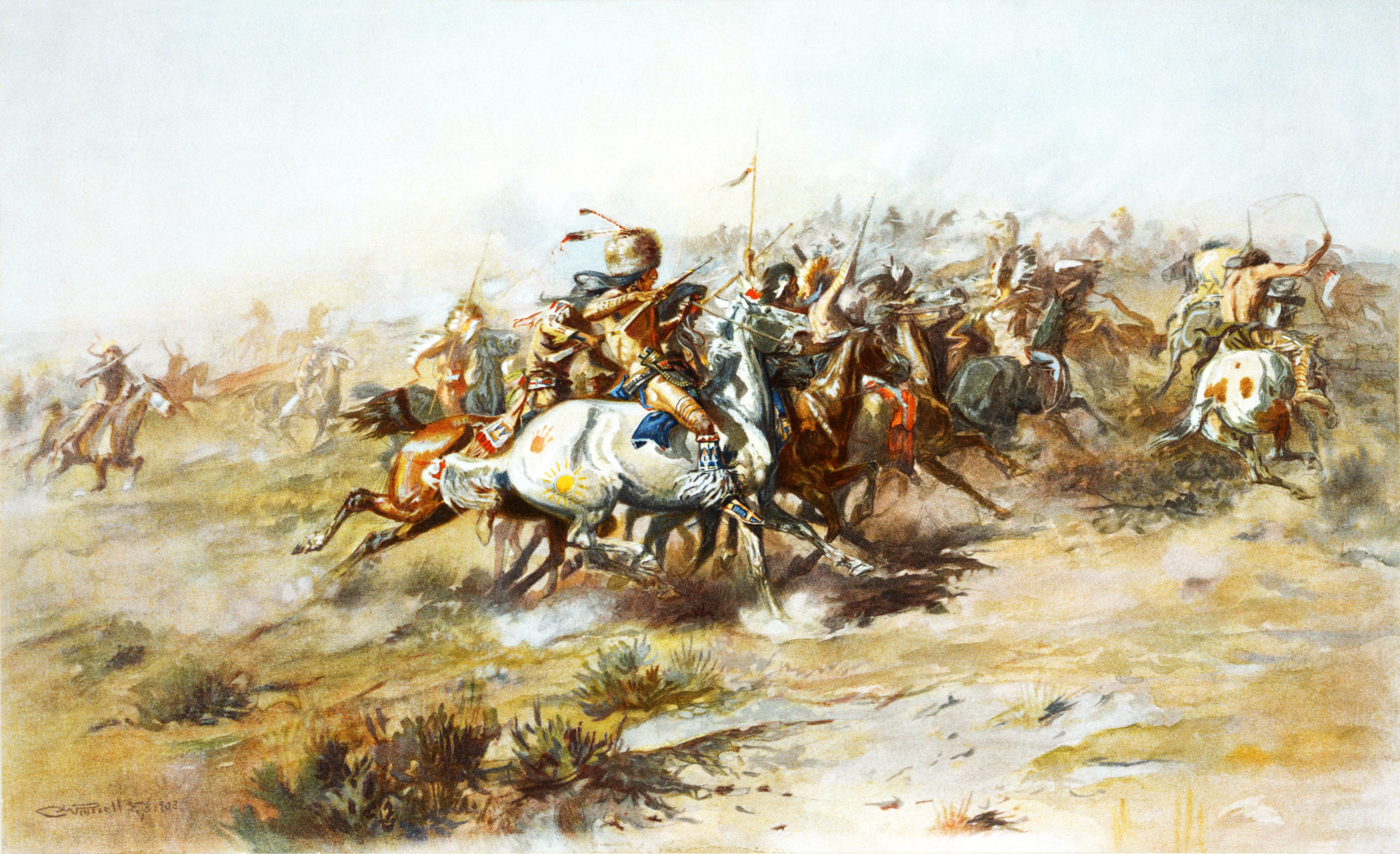
Crazy Horse fights last battle on January 08, 1877
Crazy Horse fights last battle: On this day in 1877, Crazy Horse and his warriors–outnumbered, low on ammunition and forced to use outdated weapons to defend themselves–fight their final losing battle against the U.S. Cavalry in Montana.
Six months earlier, in the Battle of Little Bighorn, Crazy Horse and his ally, Chief Sitting Bull, led their combined forces of Sioux and Cheyenne to a stunning victory over Lieutenant Colonel George Custer (1839-76) and his men. The Indians were resisting the U.S. government’s efforts to force them back to their reservations. After Custer and over 200 of his soldiers were killed in the conflict, later dubbed “Custer’s Last Stand”, the American public wanted revenge. As a result, the U.S. Army launched a winter campaign in 1876-77, led by General Nelson Miles (1839-1925), against the remaining hostile Indians on the Northern Plains.
Combining military force with diplomatic overtures, Nelson convinced many Indians to surrender and return to their reservations. Much to Nelson’s frustration, though, Sitting Bull refused to give in and fled across the border to Canada, where he and his people remained for four years before finally returning to the U.S. to surrender in 1881. Sitting Bull died in 1890. Meanwhile, Crazy Horse and his band also refused to surrender, even though they were suffering from illness and starvation.
On January 8, 1877, General Miles found Crazy Horse’s camp along Montana’s Tongue River. U.S. soldiers opened fire with their big wagon-mounted guns, driving the Indians from their warm tents out into a raging blizzard. Crazy Horse and his warriors managed to regroup on a ridge and return fire, but most of their ammunition was gone, and they were reduced to fighting with bows and arrows. They managed to hold off the soldiers long enough for the women and children to escape under cover of the blinding blizzard before they turned to follow them.
Though he had escaped decisive defeat, Crazy Horse realized that Miles and his well-equipped cavalry troops would eventually hunt down and destroy his cold, hungry followers. On May 6, 1877, Crazy Horse led approximately 1,100 Indians to the Red Cloud reservation near Nebraska’s Fort Robinson and surrendered. Five months later, a guard fatally stabbed him after he allegedly resisted imprisonment by Indian policemen.
In 1948, American sculptor Korczak Ziolkowski began work on the Crazy Horse Memorial, a massive monument carved into a mountain in South Dakota. Still a work in progress, the monument will stand 641 feet high and 563 feet long when completed.
History.com / Wikipedia / Encyclopedia Britannica / Crazy Horse Memorial.org / Biography
PBS / Black Hills Badlands South Dakota /
Crazy Horse fights last battle on January 08, 1877 (YouTube) 
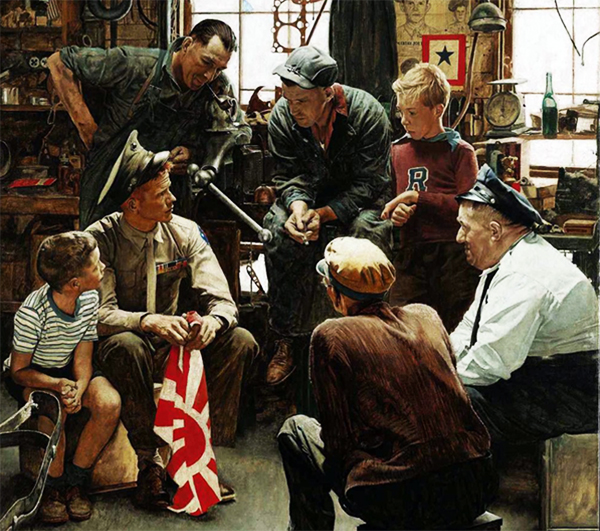
Understanding Military Terminology
Naval Construction force
(DOD) The combined construction units of the Navy that are part of the operating forces and represent the Navy’s capability for advanced base construction.
Also called NCF.
Joint Publications (JP 3-02) Amphibious Operations
Naval Forward Logistic Site
An overseas location, with port and airfield facilities nearby, which provides logistic support to naval forces within the theater of operations during major contingency and wartime periods.
Also called NFLS.
See also Logistic Support; Naval Advanced Logistic Support Site; Staging.
Joint Publications (JP 3-35) Deployment and Redployment Operations
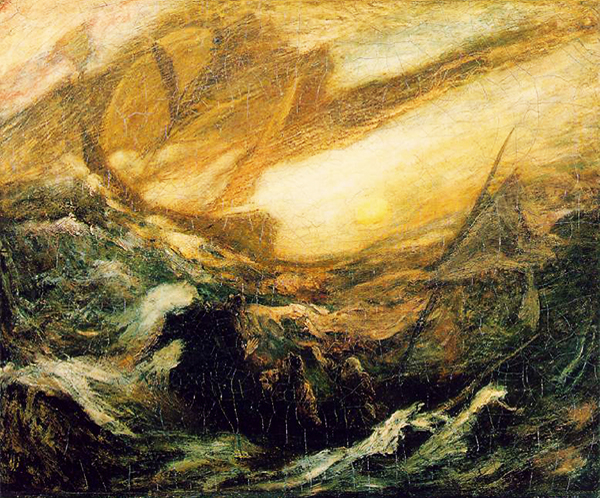
The Old Salt’s Corner
“Tales of Legendary Ghost Ships”
Legend of the Ghost Ship Palatine Light - Every winter Block Islanders can spot the ghost of the flaming ship Palatine, or so the legend goes.
The tale comes from the true story of a British vessel that ran aground on Dec. 26, 1738, and from the bad reputation Block Islanders earned for looting wrecked ships.
Sailors shook their heads when they spoke of Block Island, where wreckers lured ships ashore, killed their crews and divided the spoils.
“I would rather be wrecked anywhere than upon Block Island," became a common and significant saying in the forecastle or the midnight watch, when the dark mass of the island heaved in sight”, wrote Samuel Adams Drake in 1883.
Drake described Block Island as “a bank of clay, treeless and wind-swept, eight miles long, rising out of the ocean between Montauk and Gay Head, and lying nearest to Point Judith, on the Rhode-Island shore, from which it is about five miles distant.”
Located in the middle of busy shipping lanes, Drake called the island a 'veritable stumbling-block in the way of the anxious navigator.'
The Stories
Like the Flying Dutchman or the Ghost Ship of Salem, the legend of the ghost ship has endured for centuries.
In 1811, Dr. Aaron C. Willey, a Block Island resident, described the Palatine Light. He first saw it in February 1810.
“It was large and gently lambent, very bright, broad at the bottom and terminating acutely upward...
I saw it again on the evening of December the 20th. It was then small, and I supposed it to be a light on board of some vessel, but I was soon undeceived. It moved along, apparently parallel to the shore, for about two miles, in the time that I was riding one at a moderate pace.”
Benjamin Congdon, born around 1788, gave a typical Puritan explanation for the apparition, according to folklorist Michael Bell.
“About the burning Palatine ship... I may say that I have seen her eight or ten times or more. In those early days nobody doubted her being sent by an Almighty Power to punish those wicked men who murdered her passengers and crew.”
New England Historical Society /
YouTube 

“I’m Just Sayin”
“Talk sense to a fool and he calls you foolish.”
“Leave no stone unturned.”
“Friends show their love in times of trouble,
not in happiness.”
~ Euripides

“Thought for the Day”
“The beauty of a woman is not in the clothes she wears,
the figure that she carries,
or the way she combs her hair.”
“As you grow older,
you will discover that you have two hands,
one for helping yourself, the other for helping others.
the other for helping others.”
“The beauty of a woman must be seen from in her eyes,
because that is the doorway to her heart,
the place where love resides.”
~ Audrey Hepburn

“What I Learned”
“Your mind is a powerful thing.
When you fill it with positive thoughts,
your life will start to change.”
“There is always,
always something to be
thankful for.”
“Whenever you find yourself
doubting how far you can go,
Just remember how far you have come.
Remember everything you have faced,
all the battles you have won,
and all the fears you have overcome.”
~ Anonymous

Second Hand News: Articles from Week 02 - January 06, 2020 - January 12, 2020
 Trump warns Iran of 'massive retaliation' if it responds to Soleimani killing
• House impeachers can hide from a trial, but they can’t run
• Target America: Iran to abandon “nuclear deal” and step up uranium enrichment
Trump warns Iran of 'massive retaliation' if it responds to Soleimani killing
• House impeachers can hide from a trial, but they can’t run
• Target America: Iran to abandon “nuclear deal” and step up uranium enrichment
“Murder and strangulation:” Forensic pathologist claims Epstein autopsy photos show foul play
• Bernie Sanders and other 2020 candidates provide few details in health letters
• “The U.S. had to respond:” Trump pulled trigger on Soleimani, months after canceling planned strike
Trump threatens to hit 52 Iranian targets 'very fast and very hard' to represent the 52 hostages held by Iran between 1979 and 1981
• Death to America: Iran lists 35 U.S. targets as vengeance for Qassem Soleimani
• “Overthrow is within reach:” Leader of Iranian resistance group hails death of Qassem Soleimani
• “Attacks against Black and Brown people:” Kaepernick slams “terrorist” America after Soleimani killing
Washington Examiner
 Donald Trump warns ally Iraq will be hit with crippling sanctions if they kick out U.S. troops over the killing of Soleimani and threatens 'major retaliation' if Iran launches revenge attack
• Iranian general replacing Qassem Soleimani vows revenge for U.S. airstrikes in chilling threat issued on state TV - as slain leader's daughter warns families of American soldiers to 'await their deaths'
Donald Trump warns ally Iraq will be hit with crippling sanctions if they kick out U.S. troops over the killing of Soleimani and threatens 'major retaliation' if Iran launches revenge attack
• Iranian general replacing Qassem Soleimani vows revenge for U.S. airstrikes in chilling threat issued on state TV - as slain leader's daughter warns families of American soldiers to 'await their deaths'
Iran threatens the WHITE HOUSE: Tehran ups the ante by promising a 'crushing and powerful retaliation on American soil' and U.S. military sites and brands Donald Trump a 'terrorist in a suit' after he threatened to attack 52 Iranian targets
• Iraqi PM says Soleimani was in Iraq to 'discuss de-escalating tensions between Iran and Saudis' when he was killed - and claims Trump had asked for help mediating talks after embassy attack
Iran's “tearful” supreme leader Ali Khamenei prays over coffin of Qassem Soleimani in front of thousands of mourners at Tehran funeral ceremony as assassinated warlord's daughter warns that families of US troops are 'waiting for the death of their children'
• Iraq's parliament votes to expel ALL 5,000 U.S. troops after Qassem Soleimani killing - stoking fears of sectarian civil war and ISIS resurgence as Shia militias fight anti-government protesters
• 'Last pictures' of Soleimani: Iranian media release photos of killed general hugging and praying with Hezbollah leader in Beirut just days before fatal U.S. drone strike in Iraq
Mike Pompeo blames OBAMA for the Iran crisis: Trump's Secretary of State says U.S. is trying to restore deterrence because the previous administration's 'appeasement' of Tehran for so long left us in a 'terrible place'
• Elizabeth Warren says Donald Trump ordered strikes on Iran to distract from his impeachment trial as Democrats brand the president a 'monster' for plotting 'war crimes'
Obama welcomed leader of U.S. embassy attack at the White House: Iran's 'point man' in Baghdad Hadi al Amiri was hosted in the Oval Office in 2011 - eight years before he orchestrated siege in Iraq
• Iran issues propaganda poster showing slain commander Qassem Soleimani being hugged by the Prophet Mohammed's grandson
• A cardboard coffin and his own row of seats in the cabin: How Soleimani's body was flown to Tehran on a passenger jet - with video of the assassinated warlord playing on the big screen - after being paraded through Iraqi streets
Daily Mail UK

Mr. Answer Man Please Tell Us: Can It Ever Be Too Cold to Snow?
A question meteorologist get asked all the time during the cold winter months is “can it ever be too cold to snow”? Well, the short answer is no.
The ingredients for snow are:
1. A temperature profile that allows snow to reach the surface
2. Saturated air
3. Enough lifting of that saturated air to allow snow to develop aloft and fall to reach the surface.

The phrase “it’s too cold to snow” probably originated as a misapplication of the relationship between temperature and the maximum amount of water vapor that can be in the air. When temperature decreases, the maximum capacity of water vapor that can be in the air decreases. Therefore, the colder it gets the less water vapor there will be in the air.
Most heavy snowfalls happen with relatively warm air temperatures near the ground - usually at 15 degrees F or above. When the temperature drops into the single digits, or below zero, heavy snow is unlikely. That’s not because it’s too cold, but because its too dry. When temperatures are that low, the air’s capacity for water vapor becomes very small.
Experts say only at absolute zero would snow become impossible. Along with everything else.
AccuWeather / Wikipedia / Encyclopedia Britannica / Scientific American / National Snow & Ice Data Center.org /
Quora / Mental Floss /
Can It Ever Be Too Cold to Snow? (YouTube) 

NAVSPEAK aka U.S. Navy Slang
Jack-o'-the-Dust: A ship's cook in charge of keeping track of the ship's food stores. Originally referred to the night baker who would often be seen by waking crew members covered in flour from his nightly duties.
Jack Off Curtain: The small privacy curtain hanging on the outside of a rack. Usually the only small bit of privacy found on a ship. Also known as a “Splash guard”.
JAFO: “Just Another Fucking Observer”, given to new recruits who are fresh in the fleet and have not cleared any training.
JAG: Officer who is a member of the Judge Advocate General's Corps.
Jarhead: United States Marine.
JARTGO: Just Another Reason To Get Out. “A grain of sand on the beach of reasons to get out of the Navy”.
JANFU: Joint Army/Navy Fuck Up.
JEEP: Junior Enlisted Expendable Personnel - Submarines - Slang for Casualty Assistance Team members — “Send in the JEEPs”.
Wiktionary.org

Just for you MARINE
JAG: Judge Advocate General, colloquial name for the legal entity within the Marine Corps, more properly called Judge Advocate Division, from the Judge Advocate General of the Navy, the naval officer who oversees both the Navy's and Marine Corps' legal entities; also, a television show by the same name.
Jarhead: Pejorative term for a Marine. Jarhead has several supposed origins: the regulation “High and Tight” haircut resembles a mason jar (to add insult, some note that the jar is an empty vessel, also therefore a Marine's head an empty vessel); the Mason Jar Company stopped making jars and made the helmets for Marines during World War II.
JAX: Jacksonville, North Carolina. Located outside Camp Lejeune. Also called J-ville. Typical U.S. military town filled with bars/taverns, pawn shops, tattoo parlors, car dealers and strip clubs. More commonly referred to as J-ville.
Wikipedia.org
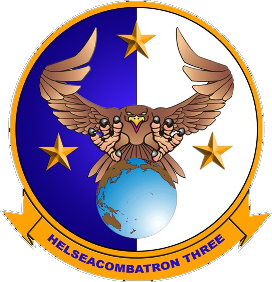
Naval Aviation Squadron Nicknames
HSC-3 Helicopter Sea Combat (HSC) Squadron THREE - nicknamed the “Merlins”
United States Navy Naval Air Station - Helicopter Sea Combat (HSC), Naval Air Station North Island, Naval Base Coronado (NBC) in San Diego County, California / Squadron Lineage: HC-3: September 1, 1967 - October 31, 2005 / HSC-3: October 31, 2005 - present.

Where Did That Saying Come From?

“The leopard does not change his spots:”
Meaning: The proverbial saying 'A leopard cannot change its spots' expresses the notion that things cannot change their innate nature. It is normally used to suggest that people who have done bad things will always be bad people.
History: 'A leopard cannot change its spots' is found in the Bible, Jeremiah 13:23 (King James Version):
“Can the Ethiopian change his skin, or the leopard his spots? then may ye also do good, that are accustomed to do evil.”
The expression has been used in English since the early English versions of the Bible. However, the text doesn't appear in Wycliffe's 1384 bible and the earliest biblical use that I know of is in the Geneva Bible, 1560:
“Can the blacke More change his skin? or the leopard his spottes?”
This is pre-empted by Johan Bale's First Examination of Anne Askew, 1546:
“Their olde condycyons wyll they change, whan the blackemoreæne change hys skynne, and the catte of the mountayne [leopard] her spottes.”
This is clearly almost identical to the biblical text, but which came first isn't clear. It could be that Bale took his lead from an existing Latin bible or it could be that the Geneva bible writers copied his text.
Phrases.org UK

Science & Technology

Young Jupiter was smacked head-on by massive newborn planet
• Humans migrated to Mongolia much earlier than previously believed
• Unraveling the stripe order mystery - One of the greatest mysteries in condensed matter
• Studying the excitation spectrum of a trapped dipolar supersolid
• How many Earth-like planets are around sun-like stars?
• Study shows women benefit from multiple marriages while men do not
• Monitoring human physiological responses to improve interactions with robots
• Scientists reverse aging process in rat brain stem cells
• Testosterone has a complicated relationship with moral reasoning, study finds
Phys.org / MedicalXpress / TechXplore

Bizarre News (we couldn’t make up stuff this good - real news story)
How many Earth-like planets are around sun-like stars?

A new study provides the most accurate estimate of the frequency that planets that are similar to Earth in size and in distance from their host star occur around stars similar to our Sun. Knowing the rate that these potentially habitable planets occur will be important for designing future astronomical missions to characterize nearby rocky planets around sun-like stars that could support life. A paper describing the model appears in The Astronomical Journal.
Thousands of planets have been discovered by NASA's Kepler space telescope. Kepler, which was launched in 2009 and retired by NASA in 2018 when it exhausted its fuel supply, observed hundreds of thousands of stars and identified planets outside of our solar system -- exoplanets -- by documenting transit events. Transits events occur when a planet's orbit passes between its star and the telescope, blocking some of the star's light so that it appears to dim. By measuring the amount of dimming and the duration between transits and using information about the star's properties astronomers characterize the size of the planet and the distance between the planet and its host star.
“Kepler discovered planets with a wide variety of sizes, compositions and orbits”, said Eric B. Ford, professor of astronomy and astrophysics at Penn State and one of the leaders of the research team. “We want to use those discoveries to improve our understanding of planet formation and to plan future missions to search for planets that might be habitable. However, simply counting exoplanets of a given size or orbital distance is misleading, since it's much harder to find small planets far from their star than to find large planets close to their star.”
To overcome that hurdle, the researchers designed a new method to infer the occurrence rate of planets across a wide range of sizes and orbital distances. The new model simulates 'universes' of stars and planets and then 'observes' these simulated universes to determine how many of the planets would have been discovered by Kepler in each `universe.'
“We used the final catalog of planets identified by Kepler and improved star properties from the European Space Agency's Gaia spacecraft to build our simulations”, said Danley Hsu, a graduate student at Penn State and the first author of the paper. “By comparing the results to the planets cataloged by Kepler, we characterized the rate of planets per star and how that depends on planet size and orbital distance. Our novel approach allowed the team to account for several effects that have not been included in previous studies.”
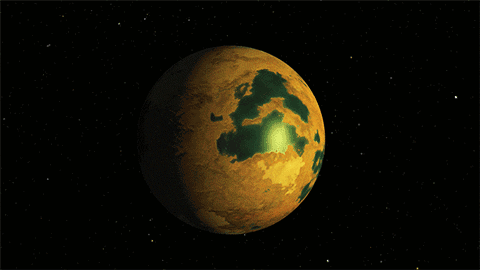
The results of this study are particularly relevant for planning future space missions to characterize potentially Earth-like planets. While the Kepler mission discovered thousands of small planets, most are so far away that it is difficult for astronomers to learn details about their composition and atmospheres.>
“Scientists are particularly interested in searching for biomarkers - molecules indicative of life—in the atmospheres of roughly Earth-size planets that orbit in the 'habitable-zone' of Sun-like stars”, said Ford. “The habitable zone is a range of orbital distances at which the planets could support liquid water on their surfaces. Searching for evidence of life on Earth-size planets in the habitable zone of sun-like stars will require a large new space mission.”
How large that mission needs to be will depend on the abundance of Earth-size planets. NASA and the National Academies of Science are currently exploring mission concepts that differ substantially in size and their capabilities. If Earth-size planets are rare, then the nearest Earth-like planets are farther away and a large, ambitious mission will be required to search for evidence of life on potentially Earth-like planets. On the other hand, if Earth-size planets are common, then there will be Earth-size exoplanets orbiting stars that are close to the sun and a relatively small observatory may be able to study their atmospheres.
“While most of the stars that Kepler observed are typically thousands of light years away from the Sun, Kepler observed a large enough sample of stars that we can perform a rigorous statistical analysis to estimate of the rate of Earth-size planets in the habitable zone of nearby sun-like stars.” said Hsu.

Based on their simulations, the researchers estimate that planets very close to Earth in size, from three-quarters to one-and-a-half times the size of earth, with orbital periods ranging from 237 to 500 days, occur around approximately one in four stars. Importantly, their model quantifies the uncertainty in that estimate. They recommend that future planet-finding missions plan for a true rate that ranges from as low about one planet for every 33 stars to as high as nearly one planet for every two stars.
“Knowing how often we should expect to find planets of a given size and orbital period is extremely helpful for optimize surveys for exoplanets and the design of upcoming space missions to maximize their chance of success," said Ford. "Penn State is a leader in brining state-of-the-art statistical and computational methods to the analysis of astronomical observations to address these sorts of questions. Our Institute for CyberScience (ICS) and Center for Astrostatistics (CASt) provide infrastructure and support that makes these types of projects possible.”
The Center for Exoplanets and Habitable Worlds at Penn State includes faculty and students who are involved in the full spectrum of extrasolar planet research. A Penn State team built the Habitable Zone Planet Finder, an instrument to search for low-mass planets around cool stars, which recently began science operations at the Hobby-Eberly Telescope, of which Penn State is a founding partner. A second Penn State-built spectrograph is in being tested before it begins a complementary survey to discover and measure the masses of low-mass planets around sun-like stars. This study makes predictions for what such planet surveys will find and will help provide context for interpreting their results.
In addition to Ford and Hsu, the research team includes Darin Ragozzine and Keir Ashby at Brigham Young University. The research was supported by NASA; the U.S. National Science Foundation (NSF); and the Eberly College of Science, the Department of Astronomy and Astrophysics, the Center for Exoplanets and Habitable Worlds, and the Center for Astrostatistics at Penn State. Advanced computing resources and services were provided by the Penn State Institute for CyberScience, including the NSF funded CyberLAMP cluster.
Science Daily (08/14/2019) 

Second Hand News: Articles from Week 02 - January 06, 2020 - January 12, 2020
 Whether You Like It Or Not, The United States Is At War With Iran
• Three Times The Inspector General Report Suggests Spygate Is Worse Than We Thought
• Iran Has Terrorists Embedded Inside The United States And Across Our Border
Whether You Like It Or Not, The United States Is At War With Iran
• Three Times The Inspector General Report Suggests Spygate Is Worse Than We Thought
• Iran Has Terrorists Embedded Inside The United States And Across Our Border
Media Coverage Of Iraq Is A Case Study Of Ignorance And Manipulation
• Xi’s China Ends 2019 With The Worst Religious Persecution In The Country’s History
• Attacks On Jews Are A Canary In The Coalmine For Religious Liberty In The United States
Ricky Gervais Made A Very Clever Golden Globes Maneuver
• Inspector General Report Shows Special Counsel Replicated FBI Abuses
• Five Ways You Can Prepare For Dangerous Gun Scenarios
The Federalist

The Iran tyranny after Soleimani & What is to be done?

What does the Iran crisis mean for Iran's and Russia's prosperous neighbor Azerbaijan?

Where is the world is Impeachment?

Bully boys of Hong Kong include a British-born police chief.

China supports Iran with rhetoric and ships.

Soleimani and Yamamoto, sloppy and dead.

Shabaab leads a successful raid on a U.S. base in Kenya.

FISA court demands answers starting January 10.
 John Batchelor (01/07/2020)
John Batchelor (01/07/2020)


SONG FACTS
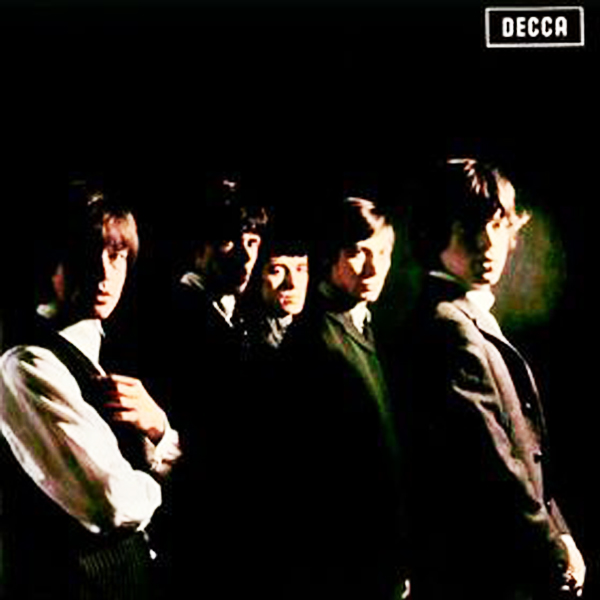
“Not Fade Away” - The Rolling Stones
Album: The Rolling Stones
Released 1964 
Buddy Holly originally recorded “Not Fade Away”  in 1957. Holly released it with his group, The Crickets, as the B-side of their single, “Oh Boy”
in 1957. Holly released it with his group, The Crickets, as the B-side of their single, “Oh Boy”  .
.
This features the “Bo Diddley Beat” - dun, da-dun, da-dun, da-dun, dun - “Hand Jive”  . The Stones toured with Diddley in England before recording this.
. The Stones toured with Diddley in England before recording this.
Charlie Watts:
“We did it with a Bo Diddley beat, which at the time was very avant garde for a white band to be playing Bo Diddley's stuff. It was a very popular rhythm for us in clubs; looking at it from the drumming point of view. So we did it in this slightly different way than Buddy Holly did it.”
Their manager, Andrew Oldham, was convinced the Stones would be successful after hearing what they did with this. Said Oldham:
“Although it was a Buddy Holly song, I considered it to be like the first song Mick and Keith wrote, in that they picked the concept of applying that Bo Diddley thing to it. The way they arranged it was the beginning of the shaping of them as songwriters. From then on they wrote. At that time, Mick, Keith, and I lived together. They were into the last half bottle of wine and going through, it was one of those magical moments. When Keith played that to me in the front room you could actually HEAR the record in that room. What basically made the record was that whole Bo Diddley acoustic guitar thrust. You heard the whole record in one room. We gotta record it! But there's no way if someone had just said coldly, Right, let's do “Not Fade Away” that we would have wanted to do it without hearing the way that Keith was playing it on the guitar. Keith just did it. And that was that. To me, they wrote the song. It's a pity we couldn't have gotten the money.”
According to an article in The Daily Mail on April 6, 2006, at the time the Rolling Stones weren't talking to each other so Gene Pitney, who knew the group through their manager Andrew Loog Oldham, claimed it was his birthday. He asked them all to drink a water glass full of cognac to celebrate and the result was this memorable cover of a Crickets B-Side. Phil Spector is credited with playing maracas on the record but in fact he was playing an empty cognac bottle with a 50 cent piece.
This was the Stones first UK top 10 hit. Their previous 2 singles were “I Wanna Be Your Man”  (written by John Lennon and Paul McCartney) and “Come On”
(written by John Lennon and Paul McCartney) and “Come On”  (written by Chuck Berry).
(written by Chuck Berry).
Bill Wyman:
“The rhythm thing was formed basically around the Buddy Holly thing. We brought the rhythm up and emphasized it. Holly had used that Bo Diddley trademark beat on his version, but because he was only using bass, drums and guitar, the rhythm element is sort of a throwaway. Holly played it lightly. We just got into it more and put the Bo Diddley beat up front.”
The Rolling Stones official site (100 Greatest Rolling Stones Songs, Rolling Stone) / Rock & Roll Hall of Fame / Billboard / All Music / Song Facts / Ultimate Classic Rock / The Rolling Stones
Image: “The Rolling Stones (album)” by The Rolling Stones
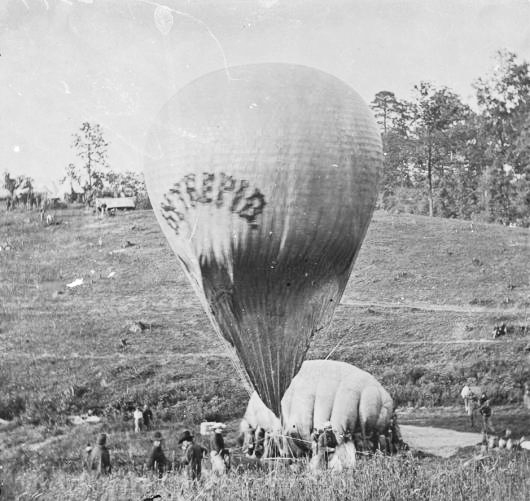
Trivia
● The first aerial war photographs were taken from a balloon, during what war?
Answer to Trivia
● Which musical instrument, found in most symphony orchestras, is named after a country?
Answer to Trivia
● What do we call the food item consisting of toast, ham, poached eggs, and hollandaise sauce?
Answer to Trivia
● Which gaseous chemical element glows reddish orange when an electric charge passes through it?
Answer to Trivia
● a. It takes how many weeks for chicken eggs to hatch after the mother hen starts the incubation period? b. Then at what age are new chicks mature enough to lay
Answer to Trivia

A Test for People Who Know Everything
From the Jeopardy Archives Category - “SO YOU'VE BEEN INDICTED” ($200)
“We swear, suborning this--getting a witness to lie on the stand in court--is also a felony, as the indictment says.”
● Answer for People Who Do Not Know Everything, or Want to Verify Their Answer Find Law
From the Jeopardy Archives Category - “SO YOU'VE BEEN INDICTED” ($400)
“Whether you stole drugs, diamonds or dirt bikes, theft of more than $500 worth of stuff is 'grand' this.”
● Answer for People Who Do Not Know Everything, or Want to Verify Their Answer Find Law
From the Jeopardy Archives Category - “SO YOU'VE BEEN INDICTED” ($600)
“You may say there is one against you, but you had an agreement with 2 others to commit a crime, so you're charged with this.”
● Answer for People Who Do Not Know Everything, or Want to Verify Their Answer United States Department of Justice.gov
From the Jeopardy Archives Category - “SO YOU'VE BEEN INDICTED” ($800)
“You didn't whisk anyone off or ask for ransom, but as O.J. found in 2008, keeping someone from leaving can also be this crime.”
● Answer for People Who Do Not Know Everything, or Want to Verify Their Answer Find Law
From the Jeopardy Archives Category - “SO YOU'VE BEEN INDICTED” ($1,000)
“So not nice you did it twice! Your bogus signature & also endorsement on that draft is double this.”
● Answer for People Who Do Not Know Everything, or Want to Verify Their Answer Find Law
Answer to Last Week's Test
From the Jeopardy Archives Category - “POPCORN” ($200)
“Legend says in 1621 Native Americans introduced the Pilgrims to popcorn by bringing it to this celebration.”
● Answer: Thanksgiving. History.com
From the Jeopardy Archives Category - “POPCORN” ($400)
“Popcorn is mostly this type of carbohydrate that provides energy & also stiffens shirt collars.”
● Answer: Starch. Healthline
From the Jeopardy Archives Category - “POPCORN” ($600)
“This product from Orville Redenbacher's is 'a little sweet, a little salty--and a whole lot of yummy'.”
● Answer: Kettle Corn. The Kitchn
From the Jeopardy Archives Category - “POPCORN” ($800)
“In 2003 Governor Blagojevich signed a bill that made popcorn this state's official snack.”
● Answer: Illinois. Chicago Tribune
From the Jeopardy Archives Category - “POPCORN” ($1,000)
“In 1914 America got its first commercial popcorn brand, this one with an upbeat name.”
● Answer: Jolly Time. Funding Universe

Joke of the Day

“THE BLOND”
A guy was driving in a car with a blonde.
He told her to stick her head out the window and see if the blinker worked.
She stuck her head out and said, “Yes, No, Yes, No, Yes...”
A blonde and a redhead have a ranch.
They have just lost their bull. The women need to buy another, but only have $500.
The redhead tells the blonde, “I will go to the market and see if I can find one for under that amount. If I can, I will send you a telegram.”
She goes to the market and finds one for $499.
Having only one dollar left, she goes to the telegraph office and finds out that it costs one dollar per word. She is stumped on how to tell the blonde to bring the truck and trailer.
Finally, she tells the telegraph operator to send the word “comfortable”.
Skeptical, the operator asks, “How will she know to come with the trailer from just that word?”
The redhead replies, “She's a blonde so she reads slow: 'Come for ta bull.'”
A blonde, wanting to earn some money.
A blonde, wanting to earn some money, decided to hire herself out as a handyman-type and started canvassing a wealthy neighborhood.
She went to the front door of the first house and asked the owner if he had any jobs for her to do. “Well, you can paint my porch. How much will you charge?”
The blonde said, “How about 50 dollars?”
The man agreed and told her that the paint and ladders that she might need were in the garage.
The man's wife, inside the house, heard the conversation and said to her husband, “Does she realize that the porch goes all the way around the house?”
The man replied, “She should. She was standing on the porch.”
A short time later, the blonde came to the door to collect her money. “You're finished already?” he asked.
“Yes”, the blonde answered, “and I had paint left over, so I gave it two coats.”
Impressed, the man reached in his pocket for the $50
“And by the way”, the blonde added, “that's not a Porch, it's a Ferrari.”



































